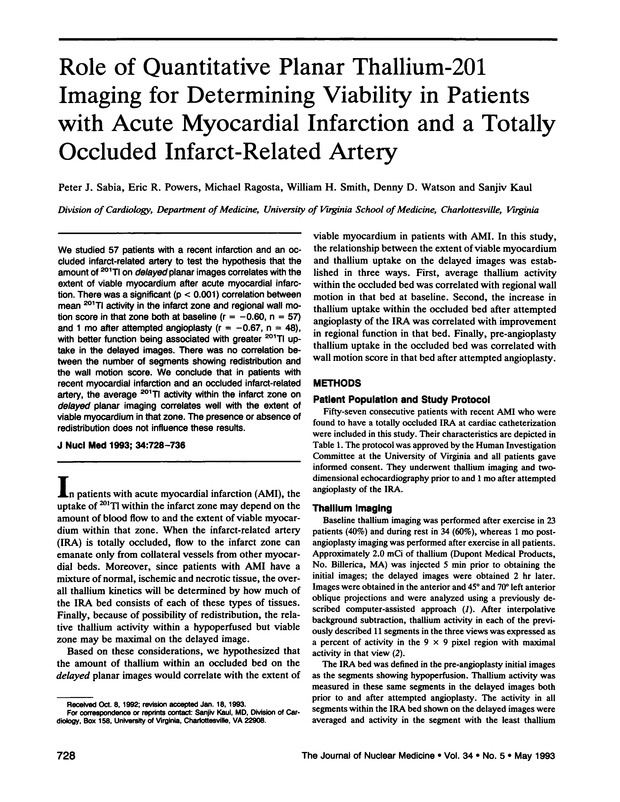Research ArticleHuman Studies
Role of Quantitative Planar Thallium-201 Imaging for Determining Viability in Patients with Acute Myocardial Infarction and a Totally Occluded Infarct-Related Artery
Peter J. Sabia, Eric R. Powers, Michael Ragosta, William H. Smith, Denny D. Watson and Sanjiv Kaul
Journal of Nuclear Medicine May 1993, 34 (5) 728-736;
Peter J. Sabia
Eric R. Powers
Michael Ragosta
William H. Smith
Denny D. Watson


This is a PDF-only article. The first page of the PDF of this article appears above.
In this issue
Role of Quantitative Planar Thallium-201 Imaging for Determining Viability in Patients with Acute Myocardial Infarction and a Totally Occluded Infarct-Related Artery
Peter J. Sabia, Eric R. Powers, Michael Ragosta, William H. Smith, Denny D. Watson, Sanjiv Kaul
Journal of Nuclear Medicine May 1993, 34 (5) 728-736;
Role of Quantitative Planar Thallium-201 Imaging for Determining Viability in Patients with Acute Myocardial Infarction and a Totally Occluded Infarct-Related Artery
Peter J. Sabia, Eric R. Powers, Michael Ragosta, William H. Smith, Denny D. Watson, Sanjiv Kaul
Journal of Nuclear Medicine May 1993, 34 (5) 728-736;
Jump to section
Related Articles
- No related articles found.
Cited By...
- Assessment of Myocardial Viability in Patients With Previous Myocardial Infarction by Using Single-Photon Emission Computed Tomography With a New Metabolic Tracer: [123I]-16-Iodo-3-Methylhexadecanoic Acid (MIHA): Comparison With the Rest-Reinjection Thallium-201 Technique
- Contractile Versus Microvascular Reserve for the Determination of the Extent of Myocardial Salvage After Reperfusion: The Effect of Residual Coronary Stenosis
- "Hibernating" myocardium: Asleep or part dead?
- Response of dysfunctional myocardium to dobutamine "The eyes see what the mind knows!"
- Residual 201Tl Activity in Irreversible Defects as a Marker of Myocardial Viability : Clinicopathological Study





